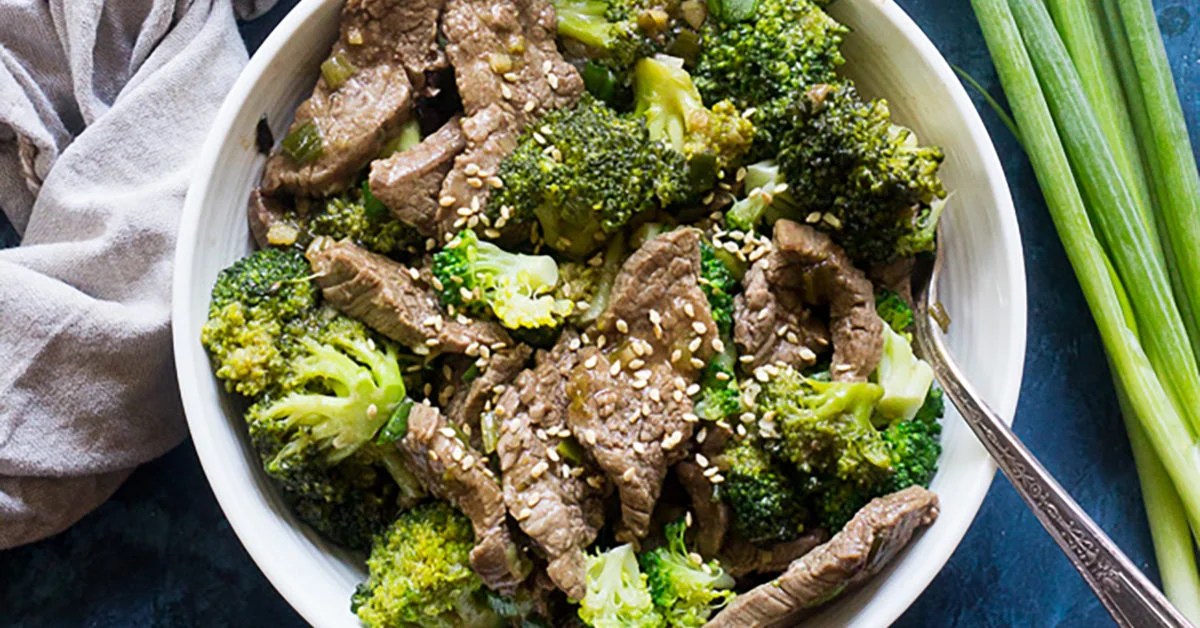Unlock a world of vibrant Asian flavors without relying on soy sauce! This guide unveils delicious alternatives and innovative techniques to craft authentic-tasting dishes, brimming with umami depth and exciting regional nuances. Imagine fragrant curries, zesty noodle soups, and perfectly balanced stir-fries—all crafted without a single drop of soy sauce. Prepare to explore a culinary adventure that redefines Asian-inspired cooking.
We’ll delve into the secrets of umami, exploring a range of pantry staples that mimic soy sauce’s savory complexity. From mastering flavorful broths to perfecting stir-fry techniques, we’ll equip you with the knowledge and confidence to create stunning soy-free Asian meals. Discover how simple ingredient substitutions can transform familiar recipes into exciting, unique culinary creations, perfect for both seasoned cooks and enthusiastic beginners.
Mastering the Art of Umami Without Soy
Soy sauce, a cornerstone of many Asian cuisines, is often the go-to for umami. However, a world of delicious, umami-rich flavors exists beyond soy. This section explores alternative techniques and ingredients to achieve that savory depth in your Asian-inspired dishes. We will delve into specific recipes and techniques that showcase the versatility of umami without relying on soy sauce.
Three Umami-Rich Asian-Inspired Recipes (Soy-Free)
Achieving umami without soy hinges on understanding the key components: mushrooms, seaweed, fermented foods, and certain vegetables. The following recipes highlight how to expertly leverage these ingredients to create complex and satisfying flavors.
- Shiitake Mushroom and Bok Choy Stir-Fry: Imagine a vibrant stir-fry where deep, earthy shiitake mushrooms, caramelized to perfection, dance with tender-crisp bok choy. The umami is amplified by a touch of oyster sauce (a naturally fermented sauce) and a hint of toasted sesame oil, creating a symphony of savory and subtly sweet notes. The mushrooms, particularly when dried and rehydrated, release an intense umami flavor, while the oyster sauce adds a rich, salty depth without the sharpness of soy. A final sprinkle of toasted sesame seeds provides a delightful textural contrast and nutty aroma.
- Miso-Glazed Eggplant with Seaweed Salad: Picture glistening slices of eggplant, marinated in a sweet and savory miso glaze. The miso paste, a fermented soybean product, delivers a powerful umami punch, even without soy sauce. Served alongside a refreshing seaweed salad, the dish is a balanced feast of textures and flavors. The seaweed, particularly kombu or wakame, adds a briny, oceanic depth that complements the richness of the miso-glazed eggplant. The contrast of the soft, melt-in-your-mouth eggplant and the slightly chewy seaweed creates a delightful textural experience.
- Kimchi Fried Rice: This dish is a celebration of fermented flavors. Kimchi, with its spicy tang and deep umami, is the star. The fermentation process in kimchi produces glutamic acid, a key component of umami. Stir-fried with rice, vegetables, and a touch of gochujang (Korean chili paste) for added depth and spice, this dish is a vibrant example of how fermentation can create intense umami without soy sauce. The slight sweetness of the rice, combined with the spicy kick of the kimchi and the earthy notes of gochujang, result in a complex and unforgettable flavor profile.
Vegetarian Noodle Soup: Broth Preparation and Ingredient Selection
A flavorful vegetarian noodle soup, devoid of soy sauce, is achievable through careful broth preparation and ingredient selection. The key is layering flavors to create depth and complexity.
- Broth Building: Start with a vegetable base. Combine kombu kelp (seaweed), shiitake mushrooms, and a generous amount of finely chopped ginger and garlic in water. Simmer gently for at least 30 minutes to allow the flavors to meld. This long simmering process extracts the umami from the ingredients, creating a rich and savory base.
- Ingredient Selection: Choose vegetables with inherent umami notes, such as mushrooms (shiitake, cremini, or oyster), bok choy, and spinach. Add firm tofu for protein and texture. Consider adding a touch of mirin (sweet rice wine) for a subtle sweetness that balances the savory elements. The noodles can be rice noodles, egg noodles, or even udon.
- Flavor Enhancement: To finish, adjust seasoning with a touch of salt and white pepper. A drizzle of sesame oil adds a nutty aroma and depth of flavor. A squeeze of lime juice at the end brightens the broth and adds a refreshing contrast to the savory elements.
Enhancing Umami in a Simple Rice Dish
A plain bowl of rice can be transformed into a umami powerhouse with the addition of strategically chosen ingredients.
Simple Umami Rice:
1 cup cooked rice
1/4 cup finely chopped shiitake mushrooms (sautéed until tender)
1 tablespoon toasted sesame oil
1 tablespoon finely chopped nori seaweed
1 teaspoon mirin (optional)
Salt and pepper to taste
Instructions: Combine all ingredients in a bowl and mix well.
The mushrooms contribute a deep, earthy umami, while the nori seaweed adds a briny, oceanic note. The sesame oil contributes its characteristic nutty flavor, and the mirin adds a touch of sweetness to balance the savory notes. The combination creates a far more complex and satisfying rice dish than plain rice alone.
Exploring Regional Variations

The vibrant tapestry of Asian cuisine offers a breathtaking array of flavors, each region boasting unique characteristics shaped by geography, history, and readily available ingredients. While soy sauce plays a prominent role in many dishes, its absence doesn’t diminish the umami richness or culinary complexity. Instead, it opens doors to explore the diverse profiles of other ingredients, highlighting the natural depth of each cuisine.
A comparison of Thai, Vietnamese, and Korean cuisines reveals a fascinating interplay of sweet, sour, spicy, and savory notes, all contributing to their distinct umami experiences. Thai cuisine, for example, often employs fish sauce as a cornerstone of its flavor profile, lending a salty, pungent depth that’s undeniably umami-rich. In contrast, Vietnamese cuisine relies more on the nuanced umami of fermented shrimp paste (mắm), creating a complex, savory base for many dishes. Korean cuisine, known for its bold flavors, utilizes ingredients like gochujang (fermented chili paste) and doenjang (fermented soybean paste), both contributing a rich, deep umami profile despite the absence of soy sauce.
Umami-Rich Ingredients Across Three Asian Cuisines
The following table highlights common umami-rich ingredients used in Thai, Vietnamese, and Korean cuisines, showcasing the regional variations in achieving a savory depth of flavor.
| Cuisine | Umami-Rich Ingredients | Flavor Profile Description |
|---|---|---|
| Thai | Fish sauce, shrimp paste, oyster sauce (without soy), mushrooms (shiitake, oyster), fermented tofu | Salty, pungent, briny, earthy, subtly sweet |
| Vietnamese | Fermented shrimp paste (mắm), fish sauce, mushrooms (shiitake, straw), dried shrimp | Intensely savory, pungent, slightly sweet, briny |
| Korean | Gochujang (fermented chili paste), doenjang (fermented soybean paste), anchovy stock, mushrooms (shiitake, king oyster), seaweed | Savory, spicy, pungent, deep, umami-forward |
Five Common Asian Spices and Herbs for Flavor Depth
Beyond the core ingredients, a selection of spices and herbs adds layers of complexity and depth to Asian-inspired dishes. These aromatic additions contribute to the overall umami profile without relying on soy sauce.
- Galangal: Possessing a warm, pungent, and slightly citrusy flavor, galangal adds a unique earthiness to curries and stir-fries, similar to ginger but more assertive.
- Lemongrass: Its distinct citrusy aroma and slightly lemony flavor profile complements seafood, poultry, and soups, adding a refreshing touch.
- Star Anise: With its intense licorice-like flavor, star anise adds a warm, sweet, and slightly spicy note to stews, braises, and marinades, particularly effective in winter dishes.
- Turmeric: Known for its vibrant golden hue and earthy, slightly bitter flavor, turmeric adds depth and complexity to curries and rice dishes, also lending an anti-inflammatory benefit.
- Thai Basil: With its peppery, slightly sweet and anise-like aroma, Thai basil adds a refreshing, aromatic punch to stir-fries, noodle dishes, and soups.
Adapting a Teriyaki Chicken Recipe
The classic teriyaki chicken recipe relies heavily on soy sauce for its signature savory-sweet flavor. However, a delicious alternative can be achieved using a combination of fish sauce and mirin, balanced with ginger and garlic.
Original Teriyaki Sauce (Soy-based): Soy sauce, mirin, sugar, sake, ginger, garlic.
Adapted Teriyaki Sauce (Soy-free): Fish sauce (for saltiness and umami), mirin (for sweetness and shine), brown sugar (for added depth), rice vinegar (for acidity), grated ginger, minced garlic.
Instructions: Marinate chicken pieces in the adapted teriyaki sauce for at least 30 minutes, then grill, bake, or pan-fry until cooked through. The fish sauce provides the savory base, while mirin and brown sugar balance the sweetness. Rice vinegar adds a touch of brightness, complementing the ginger and garlic.
To achieve a similar glaze consistency, simmer the sauce gently until it thickens slightly.
Embarking on a soy-free Asian culinary journey unlocks a universe of flavor possibilities. Through mastering umami-rich alternatives and exploring regional variations, you’ve gained the tools to create authentic and delicious Asian-inspired meals without soy sauce. Experiment with different flavor profiles, adapt recipes to your liking, and most importantly, savor the exciting culinary adventure that awaits. The possibilities are endless; let your creativity guide you in this exciting exploration of flavor!
Question & Answer Hub
Can I use tamari instead of soy sauce?
Tamari is a gluten-free soy sauce, but it still contains soy. If you need to avoid soy entirely, use one of the other alternatives discussed in this guide.
Are coconut aminos healthy?
Coconut aminos are lower in sodium than soy sauce and are a good source of electrolytes. However, they still contain sodium, so moderation is key.
What’s the best substitute for soy sauce in a marinade?
The best substitute depends on the specific dish. Fish sauce adds a salty, umami punch, while coconut aminos offer a slightly sweeter profile. Experiment to find your preference.
How do I achieve a similar color to soy sauce in my dishes?
Color is often achieved through caramelization of ingredients or the use of naturally dark-colored sauces like balsamic vinegar or mushroom broth.


